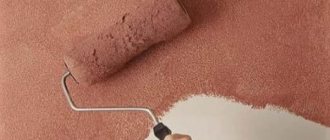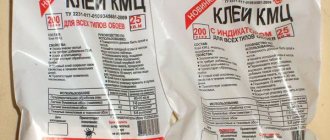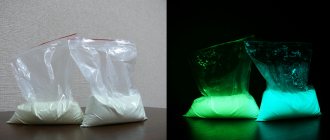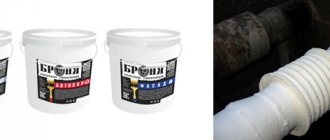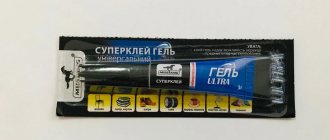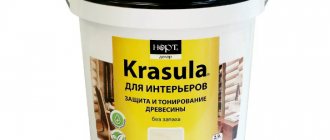What is silicone paint
Organosilicon paint is a coloring material created on the basis of polyorganosiloxane polymers. A multicomponent suspension containing various coloring pigments, to which modifying additives, silicone resins and organic solvents can be added depending on the desired performance characteristics.
There are two types of silicone paint:
- With limited heat resistance. For the most part, it is used for painting building facades and is available in a wide palette. Limitations are associated with the heat resistance of the pigments that make up the enamel. At temperatures above +150 ˚C, the pigment structure is destroyed and the coating loses its color. The service life of this category of enamels is 10 – 15 years.
- Heat resistant. Used to prevent corrosion on steel, titanium and aluminum surfaces, to protect industrial equipment parts from prolonged exposure to temperature or humid environments. This category of enamel is often used for painting stoves, chimneys, fireplaces and other heating equipment in order to avoid reducing the strength of materials susceptible to salt crystallization.
Areas of use
In construction
In construction, silicone enamels are most often used as facade paints. They are able to create a reliable protective layer on the walls and at the same time decorate the facade of the building. The material has excellent adhesion to concrete surfaces and plasters.
It should also be noted the durability of the material, which, despite any weather conditions, is able to maintain its qualities for 10 or even 15 years.
In addition, this coating is often used for painting:
- Brick;
- Stone
- Slate.
Organosilicon paint for stoves and fireplaces
Due to the high heat resistance of the material, it can be used to refine:
- Fireplaces;
- Furnaces;
- Chimneys, etc.
All of the above surfaces and paint reliably protect against efflorescence.
Equipment painted with silicone paint
In industry
In addition, organosilicon paint and varnish coatings are actively used to protect metal surfaces from corrosion. They have anti-corrosion properties thanks to special additives.
In particular, the coating is used for painting the following surfaces:
- Become;
- Aluminum;
- Titan, etc.
Most often, this composition is used to cover equipment that is intended for long-term operation under conditions of exposure to high temperatures and high humidity.
Facade priming
Compound
The main advantage of organosilicon paint - its heat resistance - is achieved due to the greater binding energy of silicon and oxygen atoms in the macromolecule of the organosilicon compound compared to a conventional carbon-containing polymer.
Anti-corrosion substances are added to the silicone paint to improve protection from changing weather conditions, ethylcellulose and acrylic varnishes to reduce drying time, carbide layers and epoxy resins for better resistance to aggressive mechanical damage.
A variety of color shades is achieved by adding organic and inorganic pigments to the enamel structure, which do not lose color at temperatures up to +150˚C.
Advantages and disadvantages
Paints and varnishes belonging to the organosilicon type, in addition to their inherent properties, also have their own distinctive features, advantages and disadvantages relative to other types of paints and enamels that are used for painting surfaces.
The main advantages of existing silicone paints are the advantages achieved during their production:
- heat resistance;
- moisture resistance and water resistance;
- fire resistance;
- light fastness, resistance to ultraviolet rays;
- atmospheric stability;
- chemical resistance;
- quick drying of the painted surface;
- frost resistance;
- wide range of colors;
- low consumption of materials when painting;
- the possibility of painting the surface at negative temperatures reaching -20 degrees;
- providing effective anti-corrosion protection to metal products.
Among the disadvantages of industrially produced silicone paints, the following should be noted:
- toxicity of fumes that are released during the drying process of the material;
- negative effects on the human body due to prolonged contact with enamels;
- use of paints and varnishes of this type exclusively for exterior work.
Organosilicon paint and varnish compositions differ from most similar types of paints in their low price, as well as in the process of adding additives to the materials, a number of very important parameters that are used in many industries and the national economy.
Unlike other types of paint, organosilicon paint and varnish material does not require priming of the surface to be painted, and the chromium compounds introduced into the composition make the enamels very resistant to mechanical stress. Similar types of paints do not have such capabilities and characteristics.
Main characteristics
Organosilicon paints are used for exterior decoration. This category of paints and varnishes accordingly has the characteristics necessary for painting outdoor surfaces:
- UV resistance. High resistance to sunlight;
- Water permeability (absorption). After the paint has completely dried, no water penetration is observed;
- Abrasion resistance: durability reaches more than three and a half thousand cycles;
- Drying time. Dries completely within two hours after applying the last coat;
- Heat resistance. Heat-resistant enamels can withstand temperatures up to +600˚C.
Organosilicon coatings: anti-corrosion properties and heat resistance
In production conditions, when due to elevated temperatures metals lose not only their strength, but also their ability to resist corrosion, there is often a need for anti-corrosion coatings that combine resistance to high temperatures and anti-corrosion properties.
Perhaps the most common method of protecting metals exposed to high temperatures (chimneys, exhaust pipes, electric motors, boilers, electric furnaces, transformers, roasting and cracking furnaces at chemical plants, household heating appliances, etc.) was and remains the application method paints and varnishes based on polyorganosiloxanes. Such compositions can withstand a temperature range of 200-600°C.
In cases where it is necessary to protect metal structures from both moisture and elevated temperatures (bridges, water towers, medical equipment), enamel paints based on modified organopolysiloxane resins are used. These polymers are also included in thermostatic coatings.
The heat resistance of materials is determined by the structure of the polymers, the type of pigments included in their composition, the technology for applying this coating and the quality of surface treatment that needs protection.
Synthetic oxygen-containing organosilicon polymers are characterized by particular strength and a high degree of endurance. Silicon atoms, oxygen and organic radicals associated with silicon atoms form a strong bond and guarantee increased strength of such polymers. And high thermal stability is ensured by the high binding energy between silicon and oxygen atoms. Macromolecules of an organosilicon polymer (when compared with other polymers) can be destroyed with the expenditure of a significantly larger amount of thermal energy. In this regard, organosilicon coatings are unique materials, since their heat resistance is several times higher than that of similar paint and varnish coatings (for example, polyurethane coatings - 140 ° C, alkyd coatings - 230 ° C, epoxy coatings - 250 ° C, fluorine-containing coatings - 290 ° C WITH).
In organosilicon enamels, in some cases, both pure organopolysiloxane resins and those modified with organic polymers are used as film-forming agents. The modification can be chemical - through polymer synthesis, when mixing polyorganosiloxanes with organic resins: physical - during the formation of films with their subsequent heat treatment.
Silicone enamels, when applied in 2-3 layers, can withstand temperatures from 230 to 500-600 ° C (for example, enamel of the KO-42, KO-42T brands applied in 2 layers, the total coating thickness is 25 microns, can withstand a maximum temperature of 230 °C; enamel grade KO-174, applied in 2-3 layers, total coating thickness -30 microns, is already 500 °C). Most often, cellulose ethers and various types of resins (epoxy, acrylic, alkyd, etc.) are used to modify the film-forming component of silicone enamels.
The presence of organic resins helps improve elasticity, increase wear resistance and accelerate the drying process of enamels. Resins containing aromatic radicals improve the heat resistance of enamels, but somewhat reduce their elasticity. Ethylcellulose or acrylic resins make it possible for the coating to dry naturally. Urea resins provide increased film hardness, and epoxy resins provide coating durability in aggressive environments. The most widely used film-forming resins for this type of coating are polymethylphenylsiloxane and polyethylphenylsiloxane resins, which simultaneously improve the heat resistance and elasticity of enamels.
To avoid changes in the color and properties of the enamel under the influence of high temperatures, as well as to ensure its rapid hardening and stabilization of the coating, they resort to the use of special hardeners. Today, the most commonly used hardeners are polyorganosilazane hardeners, such as MFSN-B or MSN-7. Previously, this function was performed by carboxylates of cobalt, manganese, lead, zinc, iron, as well as esters of boric and phosphoric acids. Later, more complex compositions based on titanophosphorus-organic compounds, silazanes (compounds with alternating silicon and nitrogen atoms) and elementosilazanes began to be used. Due to the introduction of heteroatoms or their groups into the polymer chain, the thermal stability of polymers has increased. And the introduction of groups with antioxidant properties led to an increase in thermal-oxidative stability.
The main advantage of coatings containing polyorganosilazanes is the ability of enamel to dry under natural conditions, while their analogues based on organosilicon polyorganosiloxane film-forming substances are able to dry quickly only at a temperature not lower than 200–250°C. In addition, these hardeners make the paint coating particularly durable, allowing it to withstand temperature changes from -40 to +300 ° C, not crack when heated and not undergo thermal-oxidative destruction.
The ability to dry quickly at natural temperatures has led to a natural expansion of the scope of application of these compositions: weather-resistant protection of building facades and metal structures, prevention of electrocorrosion processes in reinforced concrete reinforcement, thermal insulation protection of various types of structures, etc.
It should be noted that pigments also influence changes in the properties of paint and varnish coatings. Having different particle sizes and shapes, different degrees of film-forming wettability and different abilities for chemical reactions, pigments affect the properties of enamels very significantly. Organosilicon enamels, depending on the type of pigment used, acquire greater heat resistance and retain their appearance longer. So, if the expected exposure temperature does not exceed 250-300 ° C, then gas soot, graphite, titanium dioxide, chromium titanate, zinc chromate, as well as oxides of cobalt, chromium, magnesium, iron, aluminum, zinc, cadmium are widely used as pigments , copper and other metal oxides and their salts; green phthalocyanine and red toluidine (organic pigments). When the temperature rises to 300-400 °C, it is advisable to use the previously mentioned metal oxides. Zinc dust and aluminum powder have the highest degree of heat resistance; the permissible temperature range is 500-600 °C. In this case, when the hydroxyl groups of polyorganosiloxanes interact with metallic aluminum, polyorganoaluminosiloxane compounds are formed. In addition, the scaly shape of the particles that make up aluminum powder allows them to be located in the upper layer of the film and distinguishes this type of coating with a greater degree of coverage. At the same time, aluminum powder has the ability to reflect light, UV radiation, and IR radiation, thereby minimizing the aging processes of films, preserving their appearance for a long time when exposed to high temperatures. Coatings using aluminum powder improve heat distribution in metal structures, preventing local overheating and divergence of welds.
Metal oxides are used to color enamels in various colors for decorative use or for marking products. Colored pigments are also quite resistant to high temperatures and can withstand prolonged heating up to 500 ° C, practically without decomposition or color change. Enamels obtained by combining polyorganosiloxane resins, ceramic frits and pigments are characterized by increased heat resistance and can withstand heating from 500 to 600 °C for a long period of time and short-term exposure to temperatures up to 700–800 °C. For enamels based on pure polyorganosiloxane resins, the use of lead as a pigment is not recommended, because lead is a catalyst for their polymerization and contributes to the instability of enamels during storage. However, in the case of enamels modified, for example, with phenol-formaldehyde resins, lead components do not exhibit a catalytic effect.
The choice of pigment is regulated by each individual case of using enamels and the requirements for their physical and chemical characteristics. Unfortunately, the introduction of pigments alone into enamel cannot serve as a universal way to increase their heat resistance. This is explained by the fact that with sharp fluctuations in temperature (especially when it drops), the coating tends to crack, since high internal stress is present in compositions using pigments, and in order to prevent the process of destruction, substances with a lamellar or fibrous structure (mica, asbestos, talc).
The wear resistance and service life of silicone enamels largely depend on the quality of processing of the surface to which they are applied. Grease, rust, and traces of scale significantly reduce the degree of adhesion of the protective composition to the surface and minimize its protective properties, as a result of which moisture still penetrates through the coating from the atmosphere and contributes to the occurrence of under-film corrosion processes. In this case, scale leads to localization of the electrochemical corrosion process. On the other hand, the adhesion of enamel to a rough surface is better than to a smooth one. On a completely smooth surface, such coatings are destroyed faster under the influence of high temperatures.
The service life of silicone enamels is also determined by the type of metal on which they are applied. Basically, such compositions are applied to steel and titanium structures, since these metals have increased heat resistance.
All methods of surface cleaning in the process of preparing for the application of silicone enamels can be divided into chemical (degreasing with organic solvents, chemical chrome plating, phosphating, etc.) and mechanical (manual removal of rust, cleaning using tools, etc.) according to the method of exposure .
There are certain patterns in preparing some surfaces for applying a protective layer. For example, when working with carbon and low-alloy steel exposed to temperatures up to 400 °C, it is advisable to phosphate the metal surface, taking into account the intended purpose of the parts, and, therefore, the phosphating mode. To optimize the protective properties of silicone coatings, thick coatings of iron and manganese phosphate are applied in this case. But when the temperature parameters reach from 400 to 500 °C, the phosphate layers are destroyed and it is necessary to metallize the steel surface with aluminum, increasing the degree of electrochemical protection of the steel coating.
Alloy steels require dry blast cleaning with quartz sand, corundum sand blasting or pickling with passivation. In some cases, paint and varnish coatings have to be applied to the untreated surface of metals. Taking into account that polyorganosiloxanes are characterized by weak adhesion to metals, in the described cases they resort to the use of chemically active sublayers of various brands (for example, APK-1 or PK-89).
Preservation of all the protective properties of enamels, their heat resistance, and high degree of adhesion can only be guaranteed by a certain algorithm when preparing surfaces: cleaning the metal surface, applying a chemically active sublayer, applying the enamel itself. This method is considered universal and is used even in cases where access to certain structures is difficult (used for large or thin-walled parts). In some cases, instead of mechanically cleaning the surface from rust, rust converters are used (the thickness of the corrosion layer can reach 100 microns), which are divided according to the method of action on converting, stabilizing, penetrating and inhibiting compounds.
Rust stabilization occurs mainly due to the processes of converting various iron oxides and hydroxides into hematite Fe2O3 and magnetite Fe2O4. Hydrated iron oxides of rust are converted during chemical treatment into salts that have strong adhesion to the metal surface.
Among converting primers, the most widely used are compositions based on polyvinyl acetate emulsion (PVA), which is distinguished by its ability to deeply impregnate corrosive formations (this includes primers such as VA-1GP, VA-01 GISI, VA-1 GISI, etc.). Before applying the paintwork, such a primer must dry completely; the approximate time to complete the drying process at a relative air humidity of 30 to 90% is approximately 24 hours.
The main technological methods for applying enamels remain pneumatic spraying and brush painting. The first method is quite convenient, but is characterized by a large overconsumption of the composition due to overspray and the active release of solvent vapors. Painting with a brush is convenient for treating hard-to-reach places, but when using this method it is impossible to shade the enamel well and adjust the thickness of the paint layer, especially if the paint coating dries quickly. Namely, the thickness of the coating determines the degree of cracking or peeling of the enamel (in most cases, the thicker the layer, the lower the degree of wear resistance). As a rule, the layer thickness should not exceed 40–50 microns. (Deviations are acceptable; for example, for KO-198 enamel, the thickness can be increased to 60 microns.) Even greater thickening of the layer will lead to cracking of the coating or peeling off from the substrate. For the same reason, in most cases, primers are not used when treating the surface. However, modern industry offers several types of primers that are combined with silicone coatings (primers type VG-33 in combination with enamels KO-168, KhP-5184, KhS-5132, KhS-759; type FL-03K - in combination with enamels XV- 124, ХВ-16, ХВ-785, ХП-7120, ХП-799 ETC.)
It is extremely important to pay attention to the drying process of the enamel. Typically, this process is carried out using drying ovens (their temperature should be maintained at 150–200°C), infrared heaters (this type of heater speeds up the process, since the film is heated from the inside), and blowing systems, but when using the latter it is important to remember that blowing speeds up drying, but reduces the elasticity of the coating.
The thermoradiation drying method with forced air circulation is recommended for parts of complex configuration with shielded surface areas.
The use of curing catalysts for this type of enamels (calcium, zinc stearates, etc., lead, zinc, iron naphthenates, etc. - their presence in the varnish base is 0.1-2%.) speeds up the drying process and even allows it to be carried out at natural temperatures. . However, the heat resistance of such coatings decreases, and the thermal aging process accelerates. Thus, a large number of catalysts reduces the thermal stability of films.
There is a wide selection of organosilicon paint and varnish coatings on the market today. But at the same time, their selection and use should be based on a clear understanding of the protective capabilities of coatings with a comprehensive analysis of the parameters of enamels using this type of polymer, both in an isolated state and at the operational stage (physical-mechanical, chemical and reaction properties of all components).
Advantages and disadvantages
Advantages of organosilicon coatings:
- Painting work can be carried out at temperatures from + 40 to -20 ˚C;
- The coating can withstand extreme temperature conditions (from -60 to +150, +600 ˚C depending on heat resistance);
- Long service life: more than 15 years;
- Excellent protection against corrosion and moisture ingress;
- Large selection of colors;
- Good electrical insulating properties;
- Relatively low price;
- Insoluble in most solvents and chemically inert towards most chemical reagents.
Disadvantages of organosilicon coatings:
- The strong toxic fumes released by the composition when drying are very harmful to humans;
- Direct contact with silicone paint for a long time affects human mucous membranes and is harmful to health;
- Organosilicon can only be used for outdoor use;
- Do not apply to wet surfaces: after rain, snow or frost.
Application Tips
To ensure that the organopotassium paint coating lasts as long as possible and does not change its color, experts recommend applying it in a layer of up to 50 microns. To prevent the indicator from being exaggerated, it is worth painting the facade 2 or 3 times with a break of 15 minutes.
Some metal surfaces are best cleaned before painting. Degrease and coat with primer.
It is recommended to clean old cracked coating using mechanical or chemical methods. When using organopotassium enamels, you must strictly adhere to safety precautions, thereby protecting yourself from toxic fumes.
Where is it used?
Organosilicon facade paint is widely used in construction for decorative weather-resistant painting of external surfaces of buildings and structures. It is also used for the protective coating of brick, concrete, stone, plastered wood and pre-primed metal building elements.
The hydrophobic properties of the paint are used for protective painting of building foundations and slate surfaces.
Silicone enamel with high heat resistance is widely used in industry for painting and protecting various heating devices, parts of electric motors, transformers and internal combustion engines. As a protection against water and metal corrosion, it is used in bridge construction, shipbuilding, and for painting supports and port structures.
It has found wide application in all industrial production and national economic enterprises that require the operation of mechanisms, devices, tanks and premises in extreme temperature or atmospheric conditions.
Paint application technology
Application of paints and varnishes must be careful and consistent. The master should not forget about preparing the equipment necessary for the work, as well as purchasing a sufficient amount of enamel for a specific surface area.
Preparing the base
Before painting, each surface needs careful preparation:
- Initially, the plastered facade is cleaned of dust, dirt, and all kinds of stains. For work, you can use a construction vacuum cleaner. You can get rid of pieces of old coating using an iron spatula.
- The clean surface is plastered or puttied, since it will be almost impossible to hide all sorts of defects with paint.
- Apply a layer of primer with a roller. It should be uniform and neat.
Painting
Application of organopotassium paint or enamel can be carried out in the following ways:
- With a paint roller or brush. However, with such painting it is difficult to control the coating layer, which plays an important role in the quality of adhesiveness.
- Pneumatic spray gun. Despite the simplicity and speed of the work, this method has some disadvantages: high consumption of enamel and the release of toxic substances into the environment.
- Immersion of parts in enamel. This method is only suitable if the dimensions of the attributes match the volume of the paint container.



